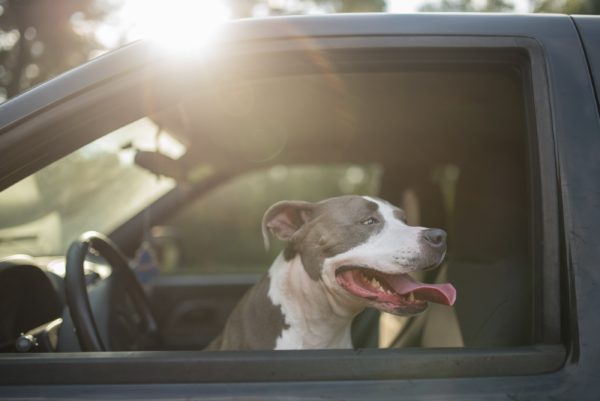 Nearly six in 10 people drive with their dog in the vehicle at least once a month, according to a survey by AAA. The respondents admitted to an array of activities that could put them (and their dogs) at risk as they drive, however, including petting their dog, restricting their pet while driving, and allowing their pooch to sit on their lap. If you have a truck, there are additional things to worry about. For instance, you should never restrict your dog to the truck with a leash attached to their neck, as in the event of sudden braking, there is a risk of strangulation. Keep the following tips in mind so you can take to the wheel with greater peace of mind.
Nearly six in 10 people drive with their dog in the vehicle at least once a month, according to a survey by AAA. The respondents admitted to an array of activities that could put them (and their dogs) at risk as they drive, however, including petting their dog, restricting their pet while driving, and allowing their pooch to sit on their lap. If you have a truck, there are additional things to worry about. For instance, you should never restrict your dog to the truck with a leash attached to their neck, as in the event of sudden braking, there is a risk of strangulation. Keep the following tips in mind so you can take to the wheel with greater peace of mind.
Choosing the Ideal Truck to Travel with Pets
Ideally, your dog should travel in a covered, closed space. This is because you never know when items flying on the road (e.g. tires or other parts that could become dislodged from other vehicles on the road) could harm your pet. If you are thinking of replacing your truck or simply looking into different truck types that can accommodate your dog, try to pick one with rear seating. This will enable you to drive safely while your dog is kept to his safe spot through the use of a doggy seatbelt (attached to a harness).
This type of truck is also ideal if you live in a cold or hot area, offering optimal air circulation. Dogs can be very sensitive to the heat or cold, especially in the case of some breeds, including brachycephalic breeds such as the Boston Terrier, French/English bulldog, or pug, All of these breeds can find it hard to breathe when they are in the sun during the spring or summer for an extended period of time.
Securing Your Pooch
If you are traveling a short distance and you have a pickup truck with only frontal seating, you will have to ensure your dog is seated within a safe structure, not simply harnessed to the back of the truck. Arguably the safest option is to fasten a dog crate behind the rear window of the truck. Use a bed topper to protect your dog against the wind and small flying objects. Think of how, when you are driving, a stone or twig can suddenly hit your windshield and make a loud noise. There should be no gaps in your dog’s crate through which these items can enter and injure your pooch, so find a crate that will allow your dog to breathe but which does not have a net-like structure.
Restraint is Always Necessary
Make sure your dog is always well restrained, even if you are only traveling short distances. Trusting Fido to stay in your truck can result in a lost or injured dog. Sometimes, the problem may not be that Fido is being disobedient, but rather, that a fast movement can result in him being flung out of the vehicle. The American Veterinary Medical Association warns that uncaged dogs who ride in the beds of pick-up trucks are at a risk of “severe injury.” Around 100,000 dogs are fatally injured every year because they jump or fall out of a pickup truck bed.
If you have a truck, your dog should travel inside it. This will protect them against the elements and reduce the chances of him falling out. If you are traveling a very short distance and all seats are occupied, place your dog in a quality crate, ensuring it is well fastened to the truck bed. Avoid this type of travel when the weather is inclement and make sure to choose a protective crate structure.
Article by: Jane Anderson, a freelance writer, editor and dog owner
Photo by Kasey McCoy on Unsplash